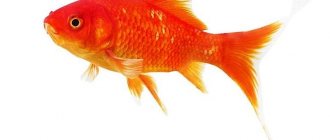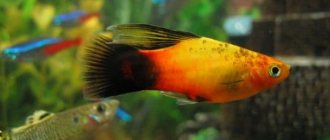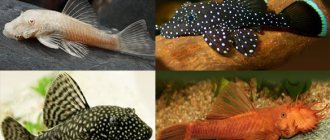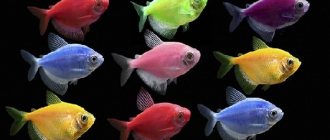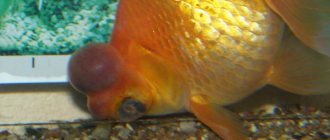Where does thornia live?
Photo: Thorn fish
In nature, this fish can be found in South America, Brazil and Paraguay.
It inhabits the basins of several large tributaries of the Amazon, such as:
- Rio Negro;
Guapore;
Slow, lowland rivers, abundantly overgrown with vegetation, are preferred for thorns. This does not mean that fish live only in large rivers: they also live in small rivers and even streams - the main thing is that they are not too fast.
The water in such slowly flowing reservoirs is soft, in addition, it is quite acidic - and thorns really prefer this. They also love shady areas, and you can usually find them in a pond in places that are located next to trees, in their shade. They prefer rivers with dark water rather than clear ones.
They usually swim in the upper layer of water, where it is easier to find their preferred food. They can swim in any layer in the aquarium, and when keeping them, to ensure the comfort of the fish, the main thing is that there are more plants there, and in the middle there is an area for free swimming.
The fish came to Europe in the 1930s and quickly spread widely among aquarium owners. This was facilitated by the fact that the thorn easily tolerated captivity and reproduced in aquariums.
What does thornia eat?
Photo: Female ternation
In its natural environment, the basis of nutrition for this fish is:
- insects;
- their larvae.
- worms;
- small crustaceans.
Typically, the reservoirs in which thornets live are abundant in this kind of food. Moreover, this fish is unpretentious and not particularly picky about food: it can eat almost any small living creature that it can catch. Food of animal origin predominates in its menu; it should be fed accordingly in the aquarium.
You can give it both live and frozen food; the fish will happily eat daphnia, brine shrimp, and bloodworms. It prefers to take food from the very edge of the water or in the middle layer; due to the position of the mouth, it does not pick it up from the bottom. If you give a lot of food at once, the fish may overeat, and constantly exceeding the norm will lead to them becoming overly fat.
Taking this into account, it is preferable to give them food that will sink to the bottom slowly, while dosing it strictly. Then the fish will eat everything and the bottom will not be clogged. The thorn itself is undemanding, but you should remember that it needs to be fed in a balanced manner; you cannot give the same thing day after day.
Dry food should be interspersed with live food, and a few components of plant origin should be introduced into the diet. If the thorn feeds too monotonously, it will begin to get sick more often, it will reproduce worse, and metabolic disorders of the fish are possible.
Many commercially available mixtures intended for tropical species are suitable for this. Feed options containing natural dyes will be useful - by eating them, thornets regain their former brightness. Fry and only individuals transferred to a new aquarium need vitamin supplements.
Care requirements and conditions for keeping thornia
Fish do not need supernatural conditions of detention. Maintaining optimal aquarium water parameters is the key to their well-being. However, it is worth remembering that:
- aeration and filtration are required, weekly replacement of up to 1/4 of the volume of aquarium water. If you change their water less than once a week, nothing bad will happen; the fish are hardy and adapt to any conditions. And if you have a large aquarium, then the water for thorns can be changed once a month.
— fish need free space for swimming; if you have a small aquarium, it is better not to populate it densely with plants and to allocate areas for swimming.
- the design of the aquarium can be anything: driftwood, stones, grottoes and other decorations. But since the fish are dark in color, it is better to decorate the back wall of the aquarium with a lighter background; the soil should also not be black. Thorns have absolutely no need for shelters (grottoes, caves); they only sometimes hide in thickets of plants.
In nature they live:
Range - Brazil, Bolivia: rivers Mato Grosso, Rio Paraguay, Rio Negro. They live in reservoirs with dense vegetation, which is why, if a home aquarium allows it, it is better to decorate it with live aquarium plants, and provide an area for free swimming in the center.
Appearance
Gymnocorymbus ternetzi belongs to the characin family, like many other fish from the Amazon basin. The body shape of the ternation tends to flatten in the vertical direction. The main body color is silver, with three dark stripes on the sides, including one on the eye.
They are shifted in the front, and the back of the body is painted in a darker color. For this color it is sometimes called a black or mourning tetra. The fins are almost transparent, the anal fin is slightly darker and resembles an open fan.
As a result of selection and hybridization, brightly colored breeds have been developed that have high aesthetic appeal.
Consequences of incorrect placement
If the recommendations for stocking have not been followed, then some fish or Ternetia themselves can easily become victims. In this case, the following changes in the behavior of the fish are observed:
- they become lethargic and inactive;
- lose appetite;
- become less resistant to various diseases.
If the situation in the aquarium is not corrected, the oppressed individuals may die due to illness or intense aggression from neighbors.
In addition, you need to understand that some species are relatively compatible: for some aquarists they will live peacefully, while for others conflicts constantly arise. The fact is that the aquarium is often overcrowded, or there are too few or too many individuals in one school of fish. In this case, it is worth planting some of the fish and observing the behavior of the rest in order to achieve balance and peace between all species.
Spreading
- In nature, thornets are found in the Brazilian state of Mato Grosso, as well as almost the entire length of the Rio Negro and Paraguay rivers, right up to their confluence with the Amazon and Parana, respectively. Their habitat is a typical biotope of South American lowland slow-flowing rivers.
- The water here is quite acidic and very clean, the so-called. “black” due to the high content of tannins and tannins, which are released into the liquid from rotting leaves and twigs falling into water bodies. The vegetation along the banks is dense and lush, significantly blocking the bright sunlight.
The fish swim in water that is not too deep, periodically hiding in thickets of aquatic plants. A significant part of the diet consists of insects that live in rivers or fall into the water due to negligence. To catch them, thorns often rise to the surface.
Imitating natural conditions is the key to successful breeding of these beautiful tropical fish.
Diseases
By their nature, Ternetians have good health and strong immunity. However, when environmental conditions change, their color becomes faded and their behavior changes.
Main diseases:
- chlorosis
Occurs due to insufficiently settled water in the aquarium;
- alkaline disease
Develops with increased acidity in water and with excess light;
- acid disease
Appears when the acidity in water decreases;
- obesity and other pathologies of the digestive system
Occurs with a monotonous diet, as well as with the use of low-quality feed;
- acedemia
This disease is caused by an increased concentration of ammonia in water. This may be due to insufficient power of the aquarium filter;
- hypoxia
Appears when the surrounding space is overpopulated;
- fin rot, parasites, ichthyophthyriosis
They occur against a background of general exhaustion and weakened immunity.
Fish diseases are always associated with errors in keeping and insufficient care of pets. When processing live food, high-quality nutrition, purified water, and observing quarantine for new inhabitants, the fish will always be healthy. Life expectancy in an aquarium is 3-5 years.
Maintenance and care
Being moderately demanding in terms of keeping conditions, which are quite easy for a novice aquarist to organize, thornets have spread throughout the world.
Aquarium
- Unlike many other aquatic pets that need space, thornets easily live in miniature aquas of 20 - 30 liters. True, it is recommended to plant no more than 4–6 individuals in such a volume.
- In spacious aquariums of 100 liters or more, fish feel freer, and under good conditions they can grow up to 5 cm. In addition, they can be joined by neighbors of other species, which diversifies the animal world.
- Proportions do not matter much; it is advisable to strive for an aquarium that is square in lateral projection or slightly elongated upward. A cover glass and forced aeration are required. The compressor power should be selected based on the size of the aquarium and the height of the water column.
- Filtration is also necessary to prevent siltation of water. However, this does not relieve the need to siphon the soil regularly.
It is recommended to keep the ratio of plants in moderation. You should not plant the aquarium too densely, otherwise the thorns will have nowhere to swim. The best option is to make shelters from snags and thickets of plants, but leave enough space for free swimming in the water column.
Water parameters
Water for Gymnocorymbus ternetzi must be clean - this is the main rule.
The optimal temperature is considered to be 22 – 24°C, but the fish can withstand a slight decrease to 20 and an increase to 26 – 27° with virtually no harm to themselves.
However, it is worth remembering: a constant elevated water temperature leads to an acceleration of metabolism and rapid aging of individuals.
The water should be slightly acidic to neutral, ranging from 5.5 to 7 pH. Hardness ranges from 5 to 15°dGH, a temporary increase to 20° is practically harmless.
To increase the purity of water and imitate natural living conditions, you can use special water conditioners (for example, from Tetra) or preparations for the “black” water effect.
It is advisable to make changes regularly, every other day, the total weekly amount of new liquid should be at least 1/3 of the total volume.
Lighting
- Ternetia loves the combination of bright light and shady areas. This allows the aquarist to grow plants together with thorns: the former serve not only as natural shelters for the latter, but also shade secluded areas in the aquarium.
- The color of the spectrum does not play a special role when containing ordinary thorns: it can be either a yellow incandescent lamp or a fluorescent gas-light tube. But when breeding colored fish, for example, the famous genetic hybrid GloFish, the shift of light into the ultraviolet spectrum gives very beautiful shades.
Feeding
- In aquarium conditions, thornets are practically omnivorous: they readily eat dry, live or frozen food, and consume vitamin mixtures when fed. Since in nature most of the diet is insects, the food should be rich in protein.
- Traditional worm-like and larval live and frozen foods are well suited: bloodworms, tubifex, coretra. You can also use small crustaceans - brine shrimp, daphnia and cyclops. Such feeding can be interspersed with dry mixtures with a balanced composition, preferably enriched with vitamins and essential microelements.
Compatibility Principles
Different types of fish can be:
- compatible;
- limited compatibility;
- not compatible.
Incompatible fish should not be kept together. Compatible, on the contrary, get along well in the same volume. Limited compatibility can coexist peacefully under certain conditions: for example, in a spacious tank with shelters or under a special feeding regime.
The compatibility of aquarium fish in one aquarium is determined by the following factors:
- Water parameters. Different species prefer different water temperatures, hardness, acidity and salinity. Fish that live in similar conditions or are able to adapt to a wide range of values are housed together.
- Feeding. The compatibility of fish is largely determined by what food they eat. Thus, predators cannot be housed with small hydrobionts, and herbivores cannot be housed with those who need plant thickets.
- Size. Fish of a similar size get along best. Large individuals can eat or oppress small ones.
- Character and behavior. It is customary to house peaceful fish with peaceful ones, and active ones with active ones. Territorial species are kept alone, schooling species are kept in groups.
In addition, you should take into account the requirements of aquarium inhabitants for lighting, flow, the presence of shelters and plants.
Reproduction
Ternetias are spawning fish with great fertility. A pair participates in spawning, or less often a small flock of one or two males and several females. Sexual dimorphism is insignificant, but present: males have a darker tone in color, and females are larger and have a more rounded body.
- To obtain offspring, a spawning tank is prepared: a low aquarium with a wide bottom with a volume of 30 - 40 liters. The water in it should be warm: 25 – 27°C, soft (4 – 6°dGH), with a neutral reaction. Cover the bottom with Java moss or a separator net - producers of both sexes actively eat caviar.
- First, the male is placed in the spawning tank, then the female. During the day, they are given intense lighting and fed nutritious protein foods. If everything is done correctly, the next morning you can already find the eggs that have fallen to the bottom. After this, adult fish are removed. The larvae hatch in up to 1.5 days. They are weak for two or three days, sitting on the surface of the plants, after which they gradually begin to swim.
Food – small food: ciliates, rotifers. Juveniles are prone to cannibalism, so fry that grow faster should be separated from smaller ones.
If there are a lot of eggs, aquarists recommend imitating natural selection. Fry and larvae that look bad or have defects must be destroyed. After all, in aquarium conditions they can survive and even give birth to offspring, but they will retain negative characteristics.
Breeding
Individuals that have reached eight months and are 2-3 cm long are considered sexually mature. Smaller fish cannot reproduce. How to reproduce? This species spawns in a separate large tank with a bottom covered with moss. The water level should not exceed 7 cm. The water temperature should not fall below 24 degrees. A filter is required. It is necessary to let the aquarium brew for several days and only then introduce individuals (female and male) into it. During spawning, fish must be actively fed with animal food. After spawning, the female and female must be moved back into the aquarium to avoid eating the eggs. The fry do not require special care; after a few days they turn into fully formed fish.
Sex differences
It's quite easy to tell the difference between a male and a female, just look at their fins. The male has a larger and pointed dorsal fin. In the female, the anal fin most closely resembles the shape of a skirt due to its large width. The photo shows a female (2) and a male (1):
Getting offspring
At the time of spawning, the male chases the female throughout the tank. A little later, the female begins to spawn, producing more than 25 eggs at a time. The male immediately fertilizes them with milk. During one spawning, the number of eggs reaches up to 1000 pieces. Reproduction takes about three hours. The eggs mature for about two days, after which small larvae appear. On day 4-5, the larva increases in size and begins to swim independently in the tank. It is recommended to feed the fry with chopped animal feed. It is recommended to place the fry in different tanks according to size to avoid damage and death of the weaker and smaller ones.
Varieties of thorns
Due to the fact that thorns quite easily produce offspring and spawn abundantly, several hybrids have been eaten:
Veil thorns Obtained as a result of selection of individuals with the longest fins. Lush decoration looks good, but requires special maintenance conditions. In addition, during the breeding season, males can pat each other.
Albinos These individuals almost completely lack pigment coloring. This thorn looks very unusual, but is well suited for color experiments.
"Caramel"
The fish got this name for their unusually bright color, which is obtained artificially - this is where albinos come in handy - their color appears most brightly. Non-standard color solutions are achieved in different ways:
- subcutaneous dye injections;
- immersing the fish in special solutions that wash away the upper mucous layer, color the fish, and then help restore mucus on the scales;
- the fish are given hormonal drugs that enhance coloration;
- feeding food that contains dyes.
Many of these methods are not very humane, and the paint gradually comes off. In addition, color is not inherited.
Who do goldfish get along with in an aquarium?
Compatibility of goldfish with other fish species is one of the necessary conditions for their harmonious life in a home aquarium. The fish’s health, behavior, and life expectancy depend on proper compatibility. Before determining what types of fish it was possible to keep goldfish with, many observations were made, which began in the Middle Ages. Since the goldfish (lat. Carassius auratus) is one of the oldest aquarium pets, compatibility has long been tested, which allows you to house it with other fish without worry.
What affects compatibility?
- Decorative varieties of goldfish are very large creatures with a body size of 20 cm in length or more, so successful maintenance requires a tank with a volume of 50-80 liters per individual.
- This type of fish is slow and graceful, so more active neighbors will disturb them.
- “Goldeners” love to plow the soil, looking for food in it or digging up plants. This habit is common to everyone, so the water will become dirty and cloudy in a short time. Fish that love crystal clear water will suffer.
- They are omnivores - they eat live, frozen, and plant foods. The diet with the neighbors in the aquarium should be the same.
- Goldfish will be able to eat very small fish. As members of the Carp family, they inherited from their ancestors a penchant for eating small animals.
- Compatibility is also affected by their motley, beautiful color, as well as lush and long fins. Keeping is not allowed with those species that are not averse to nibbling on their luxurious tail.
See how goldfish get along with macrognathus, labeo and thoracatum.
Who can you live with?
Who shouldn't you live with?
Table
Finally, we present a table of the compatibility of Danio with other fish, from it you can clearly see with whom they get along well (green) and with whom they do not get along at all (red). There is also neutral, so-called limited compatibility; in this case, both options are possible. When choosing neighbors, it is enough to focus on this table and select only fish from the green zone, then there will be no problems or hassles in the aquarium.
Compatibility table of Zebrafish with other fish
The compatibility table should be followed regardless of the variety of Danio, because The subspecies does not matter, so it does not matter whether it is Rerio, Glofish or Danio Roseus.
Feeding
Ternetias are unpretentious to food and are omnivores. Diet components:
- dry food in the form of small flakes;
- bloodworm;
- tubifex;
- gammarus;
- daphnia;
- brine shrimp
Serve frozen and live foods. Do not overuse dry food. Food must be near the surface of the water so that the thorns can eat it. Feed your pets 1-2 times a day in portions eaten within 3-5 minutes. When buying food, check expiration dates. Frozen food cannot be re-frozen.
Reviews
Often, inexperienced aquarists stock thornets with fish that are unsuitable in character, which leads to injuries. It has been noticed that when kept alone, thorns become aggressive and bite the fins of their neighbors.
